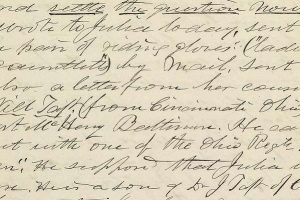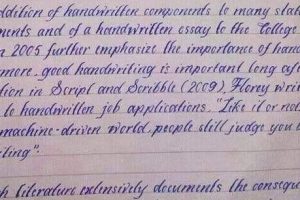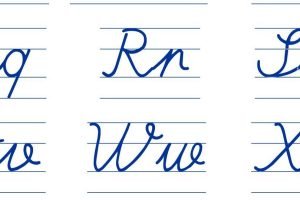The Art of Analyzing Handwriting
Handwriting is a form of personal expression that is unique to every individual. It can reveal a lot about a person’s personality, character, and emotional state. The process of analyzing handwriting is called graphology, and it has been used for many years by psychologists, employers, and even law enforcement agencies to gain insights into a person’s behavior and tendencies.
In this article, we will explore the art of analyzing handwriting and how it can be used to gain valuable insights into a person’s character and personality.
What is Graphology?
Graphology is the study of handwriting and the analysis of the patterns, strokes, and curves that make up an individual’s handwriting. Graphologists believe that every aspect of handwriting, from the size of the letters to the pressure applied to the paper, can reveal something about a person’s personality, character, and emotional state.
Graphology has been around for centuries, with the first recorded studies dating back to the 17th century. However, it wasn’t until the late 19th and early 20th centuries that graphology gained popularity as a tool for psychological analysis.
How Does Graphology Work?
Graphology works on the principle that every individual’s handwriting is unique, and every aspect of handwriting can reveal something about a person’s personality and character. Graphologists analyze various aspects of handwriting, such as the size of the letters, the spacing between words, the pressure applied to the paper, and the slant of the writing.
For example, small letters may indicate introversion or a lack of confidence, while large letters may suggest extroversion or a need for attention. A tight grip on the pen or pencil may indicate stress or tension, while a loose grip may indicate a relaxed or carefree personality.
Applications of Graphology
Graphology has a wide range of applications, from personal to professional. Here are some ways that graphology is used in different settings:
Personal Analysis:
Graphology can be used for personal analysis, to gain insights into one’s own personality and tendencies. By analyzing their own handwriting, individuals can gain a deeper understanding of their strengths and weaknesses, and work on improving their character.
Employment Screening:
Graphology is sometimes used in employment screening to assess a candidate’s personality and character. For example, a company may use graphology to analyze a candidate’s handwriting to determine whether they have the necessary traits for the job, such as attention to detail, creativity, and leadership skills.
Law Enforcement:
Graphology is also used by law enforcement agencies to gain insights into criminal behavior. Handwriting analysis can help investigators determine whether two documents were written by the same person, and can also be used to create a psychological profile of a suspect.
The Limitations of Graphology
While graphology can provide valuable insights into a person’s personality and character, it is important to remember that it is not a science. There is no empirical evidence to support the claims made by graphologists, and many experts consider it to be a pseudoscience.
Furthermore, handwriting can be affected by a number of factors, such as mood, fatigue, and physical condition, which can impact the accuracy of the analysis.
Conclusion
In conclusion, analyzing handwriting can be a fascinating and insightful process that provides valuable information about a person’s personality, behavior, and potential. While it is not a foolproof method and should be taken with a grain of salt, handwriting analysis can still offer valuable insights and information that can be used to improve personal and professional relationships, as well as self-awareness and personal growth. It is important to approach graphology with an open mind and a willingness to learn, and to always remember that handwriting analysis should never be used to make important decisions about a person’s life or future.









Add Comment